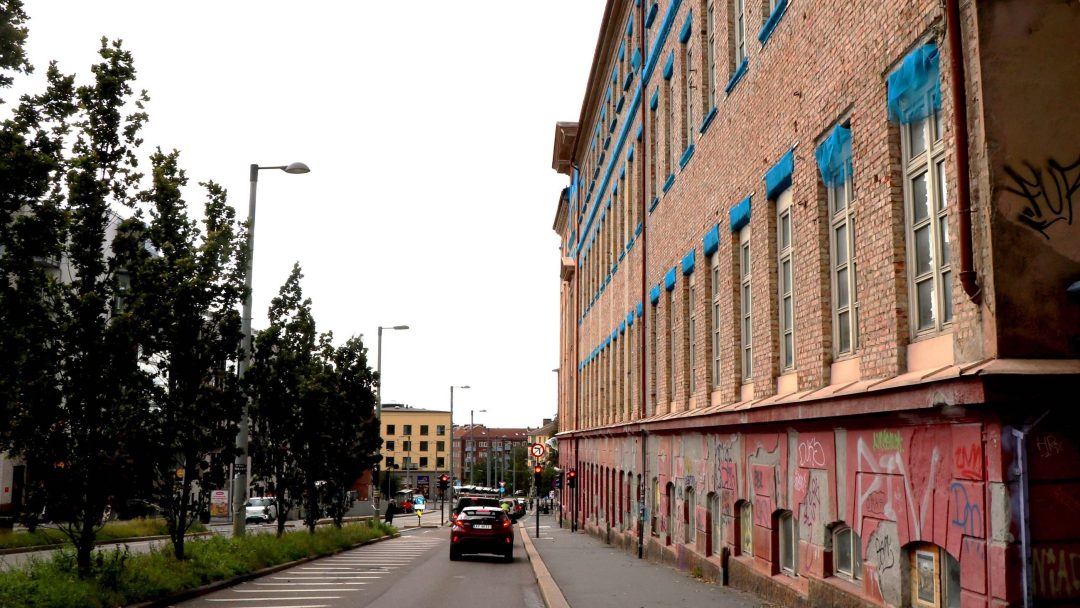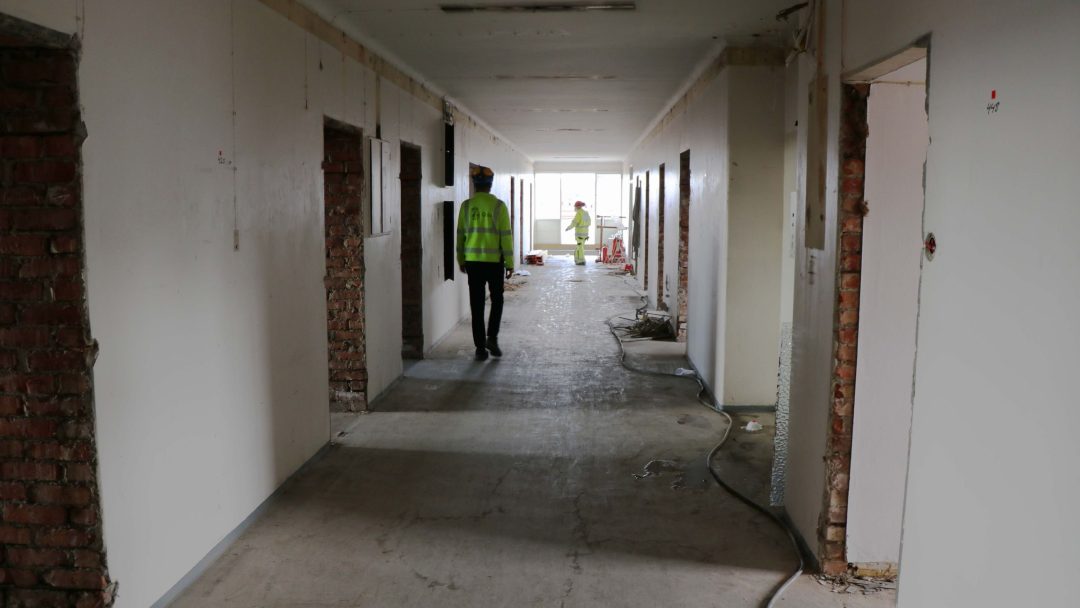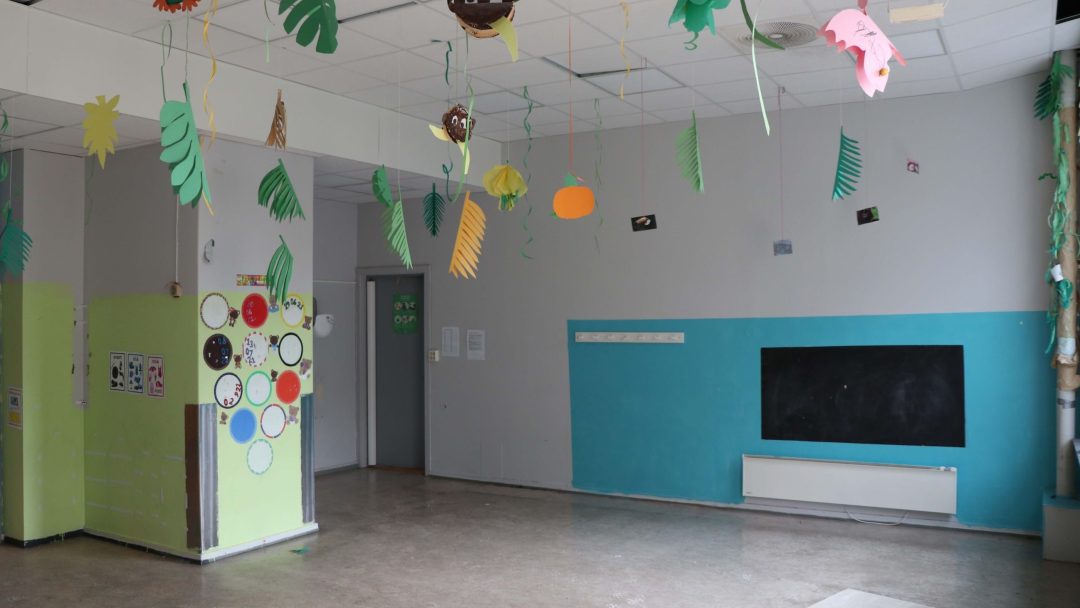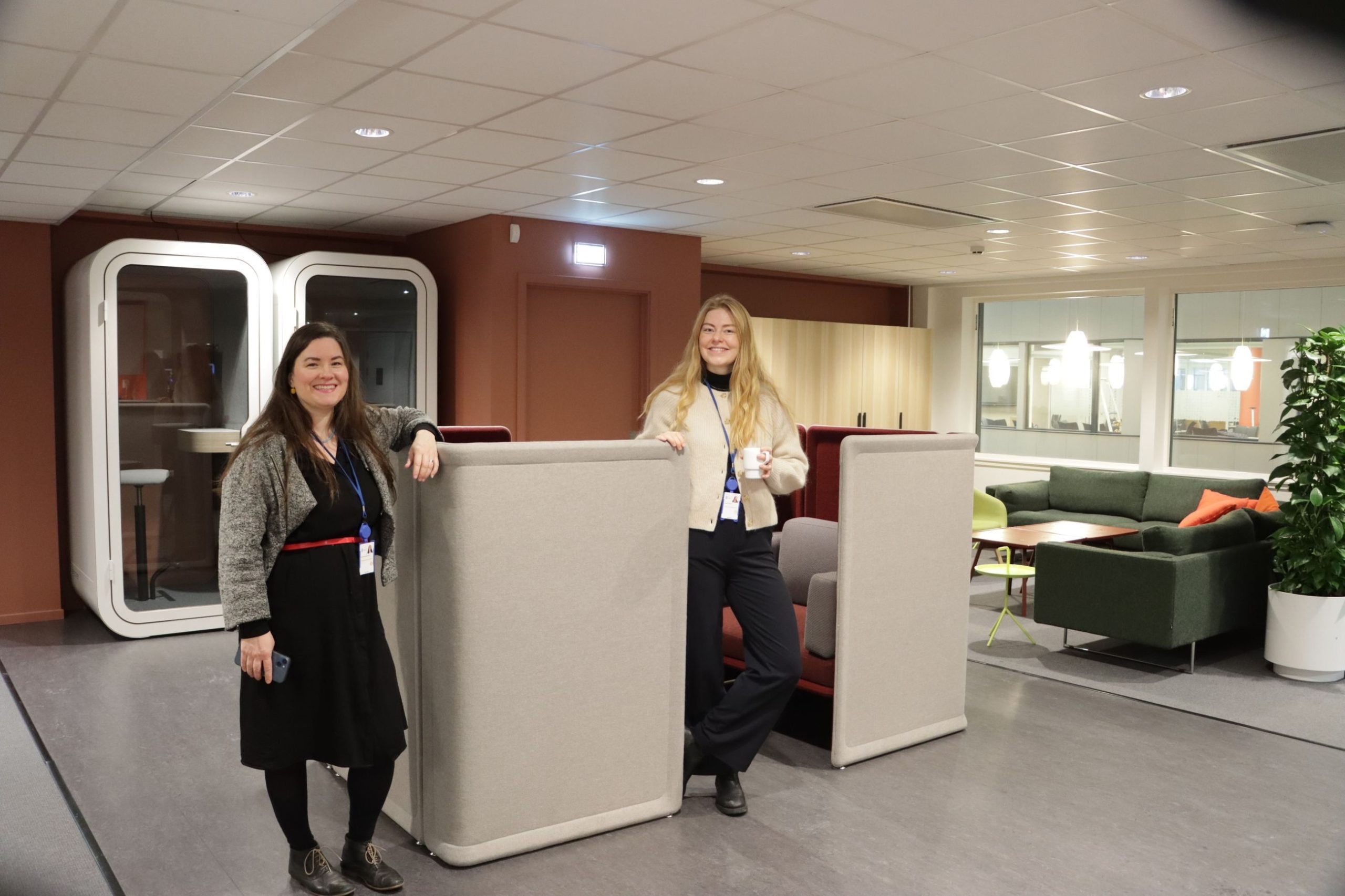Size: large
Type: image
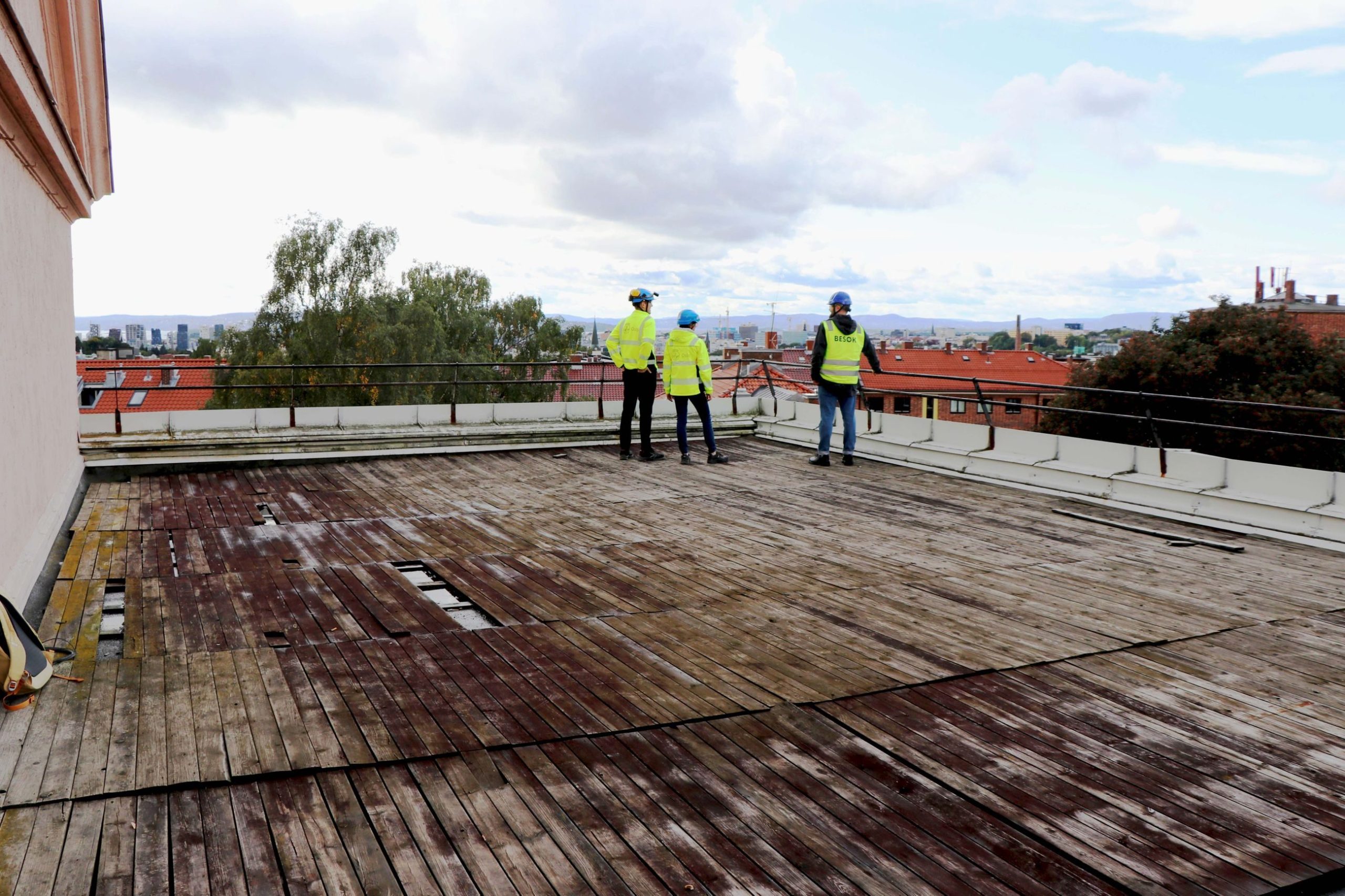
«On this wall, there was a large painting by the artist Dagfin Werenskiold, who also contributed to decorating the Oslo City Hall. We have, of course, preserved it,” says Mathias Kolsaker as he stands in the stairwell of the old, pink hospital opposite Carl Berners square. He is the project manager for the renovation of Sophies Minde and works at Oslobygg KF, the municipality’s builder.
Oslobygg KF
Oslo municipality's construction agency.
Builds (among other things) schools, kindergartens, and nursing homes.
Aims to reduce emissions from the production of construction materials by 30% annually towards 2030.
Since the interwar period, this was a specialist center for orthopedics and treatment for those with reduced mobility. Right after the turn of the millennium, it was hastily converted into a kindergarten after municipalities were mandated to offer kindergartens to all residents.
Now, the children have left the building, but they left some traces behind. Decorations hang from the ceiling, information for the parents is scribbled on whiteboards, and several paintings by unnamed artists adorn the walls. In 2026, they will move back into a new and larger kindergarten, along with the administration for the Grünerløkka district.
«The building they move into then will be as similar as possible to the one standing here now, just equipped for new decades», says Kolsaker. He shows walls, doors, lamps, and a whole range of other interior parts that will continue on the journey. “Reuse” is written on tape pieces placed around the building.
Sophies Minde
The building near Carl Berners square was first built as a brewery in the late 1800s. In 1927, Sophies Minde took over, and at the turn of the millennium, parts of the premises were converted into a kindergarten.
It will now be completely renovated, and will include 20 kindergarten units, offices, and district functions for the Grünerløkka district.
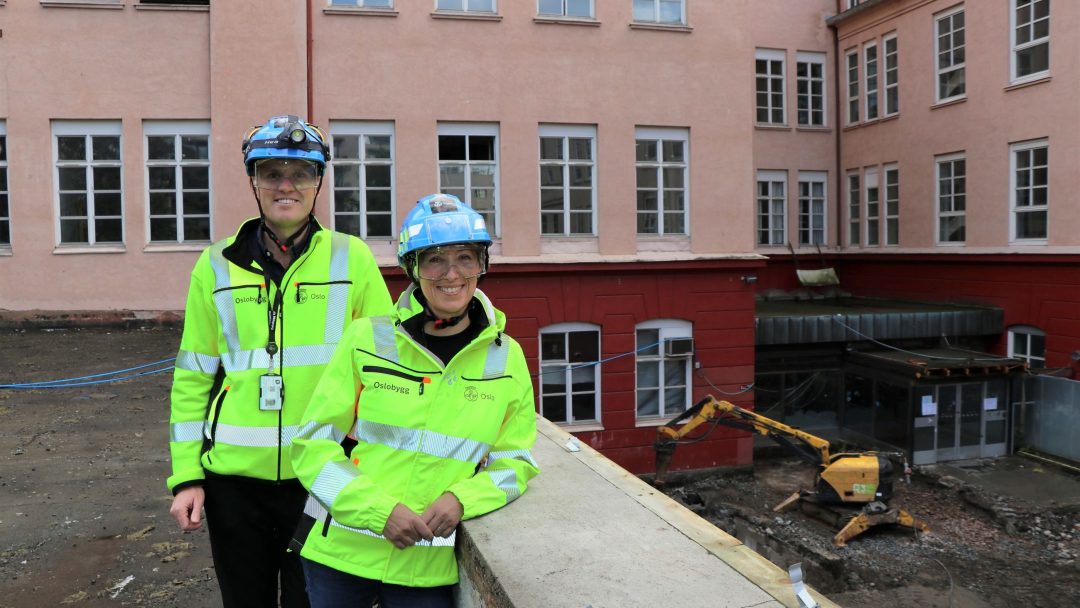
Project manager for the rehabilitation of Sophies Minde, Mathias Kolsaker at Oslobygg KF, and Bodil Motzke, head of sustainability and innovation at Oslobygg KF.
«There are enormous amounts of materials involved in a building of this size. By using the existing structure, the building may not be as well insulated, but the materials we need to add are minor compared to the materials needed for new construction», says Kolsaker. This results in the carbon footprint calculations for the completed project being much lower than for a similar new building, even when including emissions from energy use over the lifecycle.
Indirect Emissions in the Climate Budget
Life in the city depends on a wide range of global processes. The food we eat and the products we buy are often produced far away from Oslo. Our consumption therefore leads to greenhouse gas emissions outside the city’s borders. These emissions are called indirect emissions.
Indirect Emissions
Greenhouse gas emissions that do not occur where we are, but as a result of our consumption.
Typically in the production and transport of goods and services.
Although there are no exact figures on this type of emissions, we know that the indirect emissions from Oslo are significantly larger than those that occur physically in the municipality, such as exhaust from cars. Consumption also contributes to significant use of natural resources. Therefore, it is important that we have a good overview of where these emissions come from. For the first time, this year’s climate budget includes indirect emissions.
With support from Klimasats, Oslo Municipality has started a project to create a management system for these measures. The management system will include approved instruments, reporting responsibilities, and indicators that show the progress of the work. This way, the municipality will ensure that “Oslo’s contribution to greenhouse gas emissions outside the municipality is significantly lower in 2030 than in 2020.”
Climate Budget
The climate budget is an integrated part of the economic budget of Oslo Municipality.
It shows which municipal agencies are responsible for implementing measures and instruments to reduce emissions.
This includes reporting requirements similar to other economic reporting.
The climate budget for 2024 includes indirect emissions for the first time.
To achieve this goal, meat consumption in the municipality must be reduced, furniture must be reused, the lifespan of computers must be extended, and textiles must be repaired – to name a few. But the construction sector cannot be ignored. The production of construction materials is among the largest sources of global emissions.
The Hidden Side of Buildings
In the background at Sophies Minde, a low hum from electric excavators, demolition machines, and rollers can be heard. In front of us stands the construction site’s own DC fast charger. The smell of freshly laid asphalt fills the air.
«If Oslo is to be a leader in climate action, it is not enough to reduce only the greenhouse gas emissions that occur here, such as from the excavators on the construction site», says Bodil Motzke, head of sustainability and innovation at Oslobygg KF.
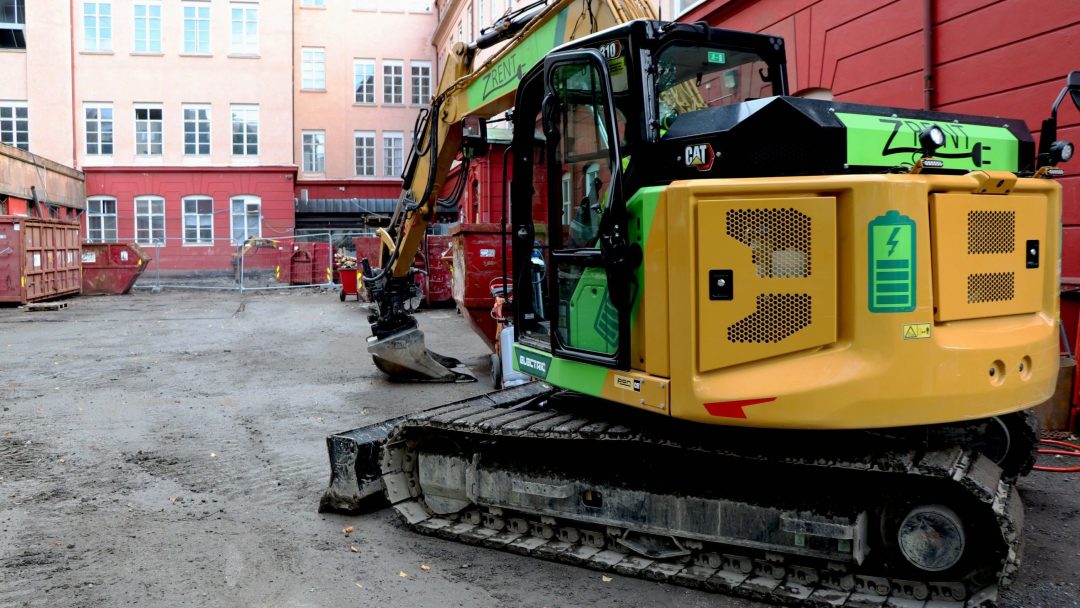
Electric excavator
«We must also reduce our contribution to emissions that occur outside the municipal borders due to our consumption. We must use fewer and more climate-friendly construction materials. The best way to do this is to renovate old buildings rather than build new ones.»
Globally, the construction and building sector accounts for 37% of all emissions. The production of materials such as cement, steel, and aluminum contributes significantly to these emissions.
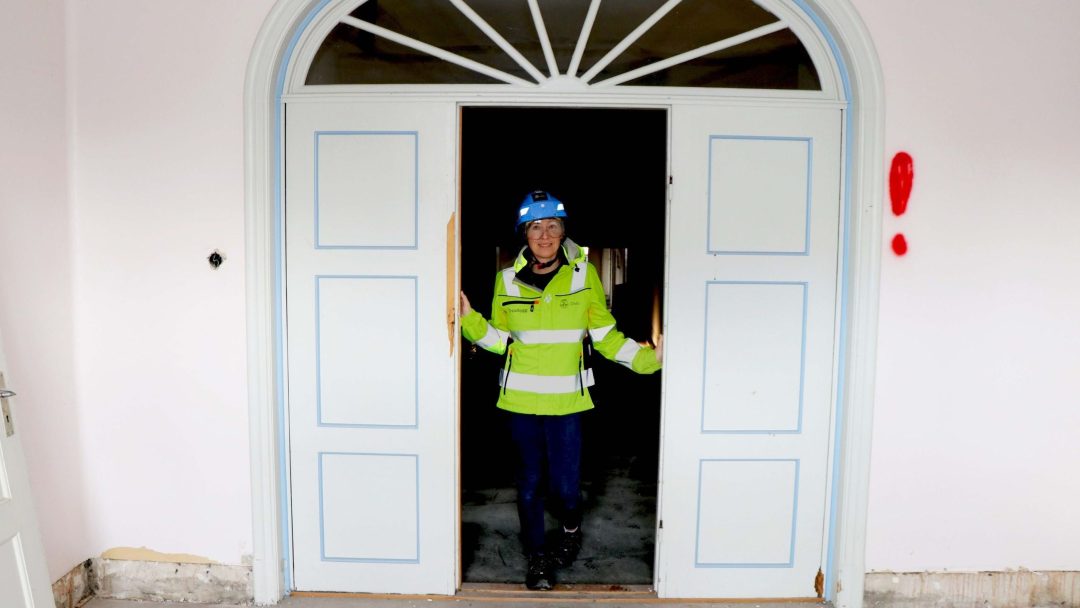
This door will be preserved. Hence the exclamation mark.
Project manager Mathias Kolsaker agrees.
«It will also be a great building, with many qualities that one might not have afforded today», he says, while the group admires an antique set of double doors leading into a room with a generous ceiling height and a view of the tram station below. The district’s busiest public transport hub is located right outside the site.
«There is no need for parking spaces beyond a few handicap spots», he adds.
This article was translated from Norwegian with the assistance of AI.
